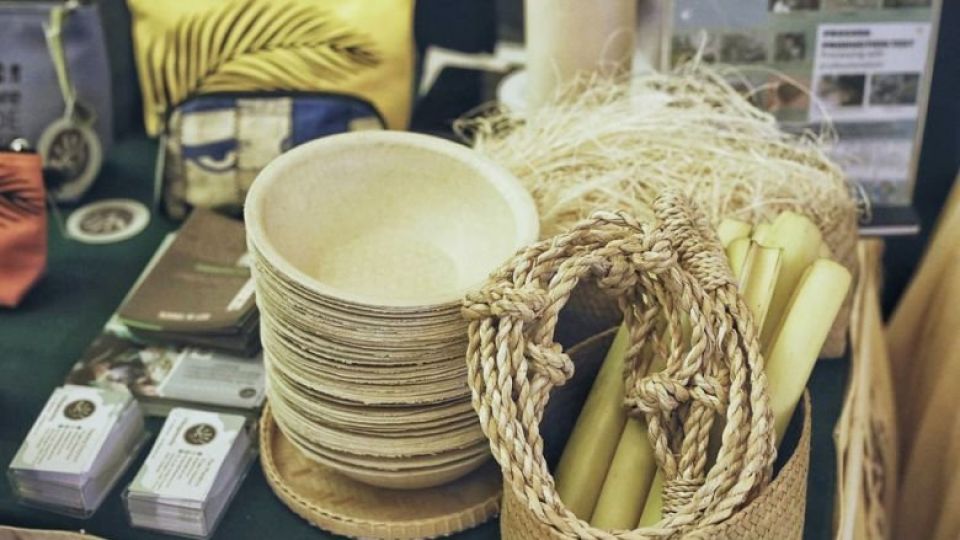February 23, 2023
PHNOM PENH – Banana trees are typically cut down by farmers after one harvest because they die after fruiting. The rest of the tree aside from the fruit that gets cut down becomes a pile of waste that typically goes unused for any purpose.
Seeing a lot of waste and a potential cheap source of raw materials, a former student of bio-engineering tried to find out what the possible uses for the banana trees might be.
The research project began in 2021 and came to fruition in June 2022 when they began trial production of environmentally healthy dishes.
“Bananas have a lot of fibre, so if we use them to make plates, they are tough while in use but dissolve fast when out in the environment,” said Soeung Sreynich, a researcher on the project and an employee of Villageworks Cambodia.
In addition to the banana fibre, she said there are other raw materials that have been researched that can be used to make dishes, but seeing that there are plentiful banana trees available, her team decided to use banana trees as their raw material.
Her organisation has now established a network of farmers and communities that grow bananas whom they buy their banana trees from at a price of 1,000 to 2,000 riel ($0.25 to $0.50) per tree, which gives some added profits to farmers for something that in the past was just debris on their land.

Soeung Sreynich (left), a former bio-engineer who makes eco-plates and other products from banana trees. PHOTO SUPPLIED
According to Sreynich, the low cost of raw materials allows for the sale of environmental dishes to the market within a reasonable price range that people can afford.
“The first step is to take the banana tree whose fruit have been harvested and put it in the machine to extract the banana fibres, then we grind the fibres and press them into the shapes we want, round or flat. We can also make it into paper,” she said.
She noted that in one day, her workshop can produce between 25 and 40 plates, which is still a low number because the handicraft is still small scale. However, according to the plans of Villageworks, this will be expanded soon to supply a larger share of the local market.
A price has not yet been set for the products because they are now at the stage of testing the quality of the dishes first, but the project is fully supported by the Ministry of Environment as well as the UN Development Programme (UNDP) as it is an innovative way to reduce Cambodia’s reliance on disposable plastics.
Villageworks’ next step will be to try and expand their banana tree-made goods into other objects used in daily life that are typically disposable plastic such as straws and other common items.


